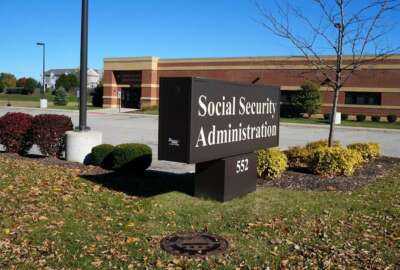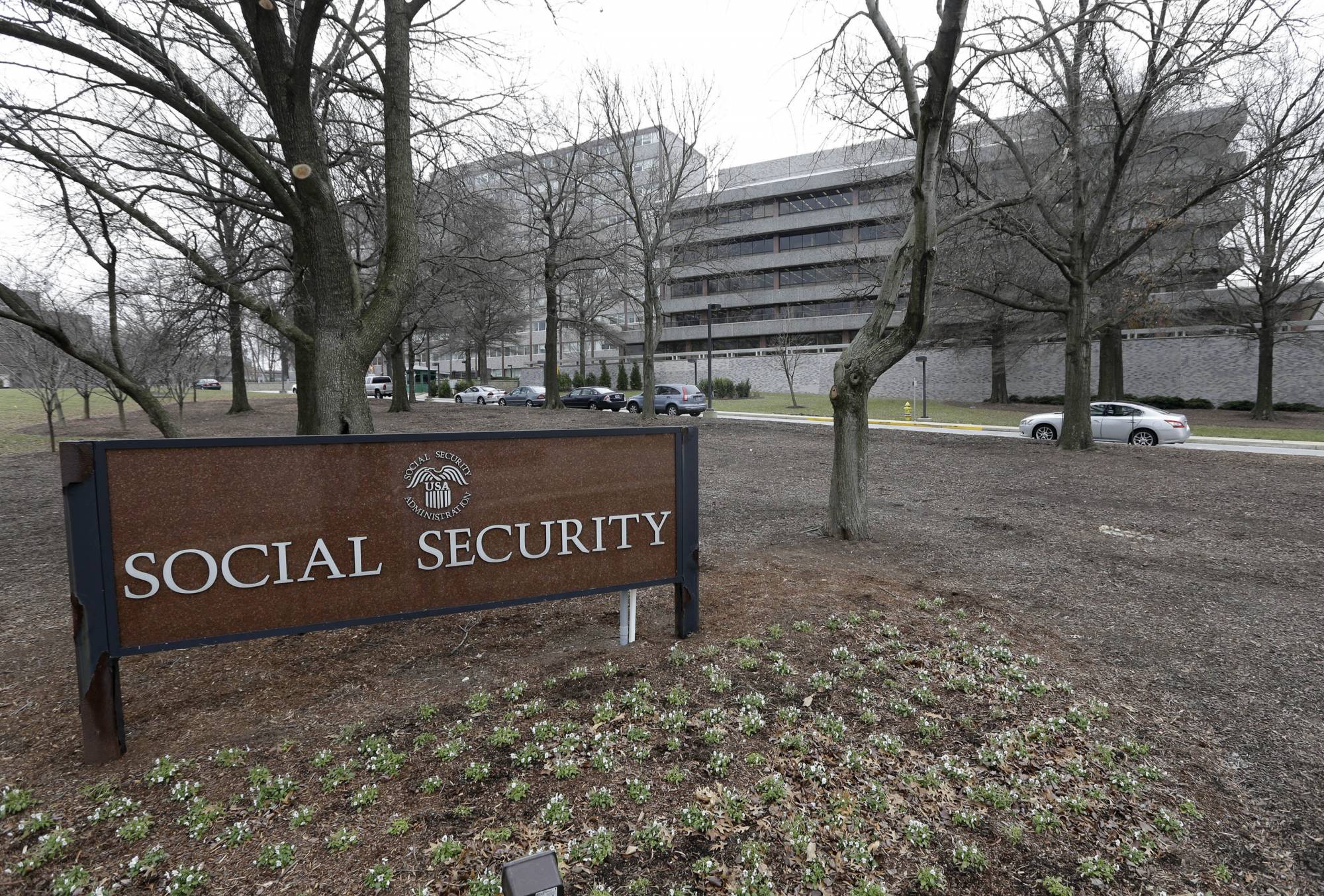SSA reaches agreement with 3 unions over office reentry plans
The Social Security Administration has reached an agreement with its three unions on office reentry plans.
The Social Security Administration has reached an agreement with its three unions on office reentry plans, after receiving pushback on its earlier plans to return employees to the office.
Acting SSA Commissioner Kilolo Kijakazi, in a statement Wednesday evening, said the agreements with its unions will help the agency better serve the public “during this unprecedented time.”
“I am very pleased to share that we have successfully reached an agreement with our three labor unions on our reentry plan,” Kijakazi said. “This will be a significant step toward improving access to our services as we implement this plan.
SSA field offices have been mostly closed to the public, or open by appointment for “dire-needs” only, since March 2020.
SSA last November planned to bring employees back to the office starting Jan. 3 this year, but those plans were complicated by the rise of the omicron variant of COVID-19, a surge in cases nationwide and pushback from unions.
Kijakazi, in an email sent to all SSA employees Friday, said the agency is planning on reentry and implementation of new telework schedules for most employees on March 30.
The all-staff email states managers will begin to talk to employees about telework eligibility, the number of telework days allowed per week and an explanation of how and when to request telework.
Kijakazi said SSA anticipates that field offices will allow in-person service without an appointment by early April.
“As we expand the availability of in-person service, we will continue to encourage the public to go online, call us for help if they cannot complete their business online, and schedule appointments in advance. Customers who walk in without appointments may encounter delays,” Kijakazi wrote.
The National Treasury Employees Union, which represents employees in SSA’s Office of Hearing Operations, said NTEU Chapter 224 has negotiated an agreement that increases telework opportunities for all employees for the first six months of the reentry back into the workplace, extends scheduling flexibilities and maximizes safety for those who return to the office.
NTEU President Tony Reardon said in a statement Thursday the union has not yet received a 30-day notice of exactly when the reentry process will begin, and added that SSA employees have successfully teleworking throughout the pandemic.
“NTEU expects the agency will revisit telework, and bargain as appropriate, on extending and expanding telework opportunities in the future,” Reardon said.
AFGE agrees on plan to return 45,000 employees to the office on March 30
The American Federation of Government Employees, meanwhile, has reached an agreement with SSA that would return 45,000 employees to the office on March 30.
AFGE, however, said the March 30 return date is subject to changes in pandemic conditions and further negotiations with agency components. SSA will send employees a subsequent notice if reentry plans are postponed beyond that date for any reason.
AFGE said the agreement signed Thursday stems from months of negotiations from the agency.
Rich Couture, chief negotiator for the union on the reentry plans and president of AFGE Council 215, said the memorandum of understanding will help mitigate the spread of COVID-19 and allow the union to resolve component-specific issues before employees reenter the office.
“This agreement is only the first step, but we now have a path forward to begin reopening SSA offices and worksites in a manner that protects both the health and safety of employees and the public we serve,” Couture said.
As part of the memo, SSA and AFGE agree to hold several meetings over component-level reentry, workplace safety and evaluation period issues.
The first of these reentry meetings will take place no later than Feb. 1. The agreement requires two follow-up meetings to be completed no later than March 1.
Within seven days of the final reentry meeting, the memo states AFGE may submit a bargaining request to address “unresolved issues.”
“The parties recognize that once reentry commences, issues may arise that are not addressed in this MOU,” the memo states.
Ralph de Juliis, president of AFGE Council 220, which represents about 23,000 SSA employees, told The Federal Drive with Tom Temin on Thursday said that telework remains a critical part of the negotiations regarding office reentry.
“That’s when telework begins and work at home by quarantine ends, and so management has to get people their telework agreements, employees who have underlying serious health conditions may still get a reasonable accommodation to continue to telework,” de Juliis said.
SSA employees currently working from home connect to a secure virtual private network, and answer calls from the incoming phone line to help people schedule appointments.
De Juliis said the telework policy for SSA employees post-office reentry remains unclear, and that the number of allowable telework days per week may vary by component. He said AFGE Council 220 has made an information request for each office’s telework plan.
De Juliis stressed that employees are more productive and better able to serve customers while teleworking.
“We keep trying to remind the agency that when the former commissioner canceled telework, we were in the office five days a week. Waiting times were four-to-five hours and you couldn’t get an appointment. We had to take your name because the appointment calendar only goes out 60 days and we didn’t have any appointments available. Right now, we’re teleworking and for most cases, we have appointments available in 72 hours,” de Juliis said.
As long as the MOU remains in effect, all AFGE employees, contractors, visitors and members of the public will be required to wear masks inside SSA facilities, regardless of vaccination status.
“We’re hoping for more appointments and limited walk-ins, so that employees can enjoy the benefits of telework, and that the public can enjoy the benefits of the improved services we’ve been able to deliver while we’ve been teleworking,” de Juliis said.
The memo specifies that a phased reentry for AFGE bargaining unit employees will begin no earlier than 30 days after the agreement is implemented.
The memo allows employees with children in remote learning due to COVID-related school or childcare closures, as well as employees with dependent family members considered high-risk for COVID, to request episodic telework.
The memo says employees are responsible for bringing office equipment used to telework back to their office upon reentry.
Employees who will primarily telework or have a reasonable accommodation, however, may not be required to bring certain equipment back to the office.
SSA said in the memo that it would expedite the processing of reasonable accommodation requests related to office reentry. Employees with pending requests will, in most cases, not be required to return to the office until the request is resolved.
SSA to resume some in-person disability claims hearings in May
The Association of Administrative Law Judges also announced this week that it reached an agreement with SSA to resume in-person disability as soon as May 4, while continuing to hold virtual video and phone hearings.
The memorandum of understanding between SSA and AALJ allows judges to voluntarily schedule in-person hearings as soon as May 4, but sets the earliest return-to-the-office date for all other judges at June 3.
Judges can continue to telework on all days without in-person hearings, and will only be required to work onsite on days when they’re scheduled to hold in-person person hearings.
SSA has also agreed not to mix in-person hearings with online or phone hearings without prior approval from the judge, which gives the agency an incentive to ensure judges have full dockets of in-person hearings.
Copyright © 2025 Federal News Network. All rights reserved. This website is not intended for users located within the European Economic Area.
Jory Heckman is a reporter at Federal News Network covering U.S. Postal Service, IRS, big data and technology issues.
Follow @jheckmanWFED





